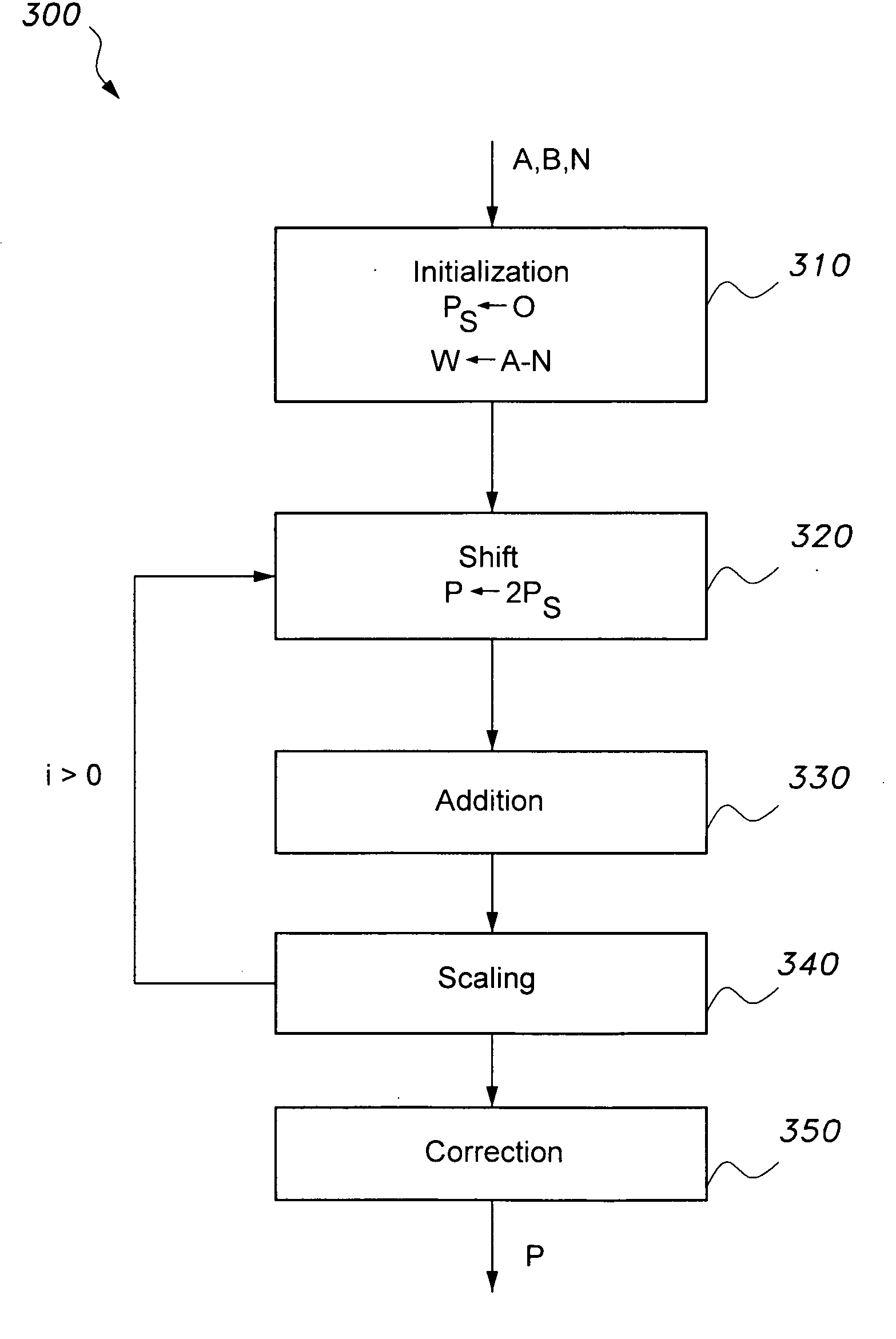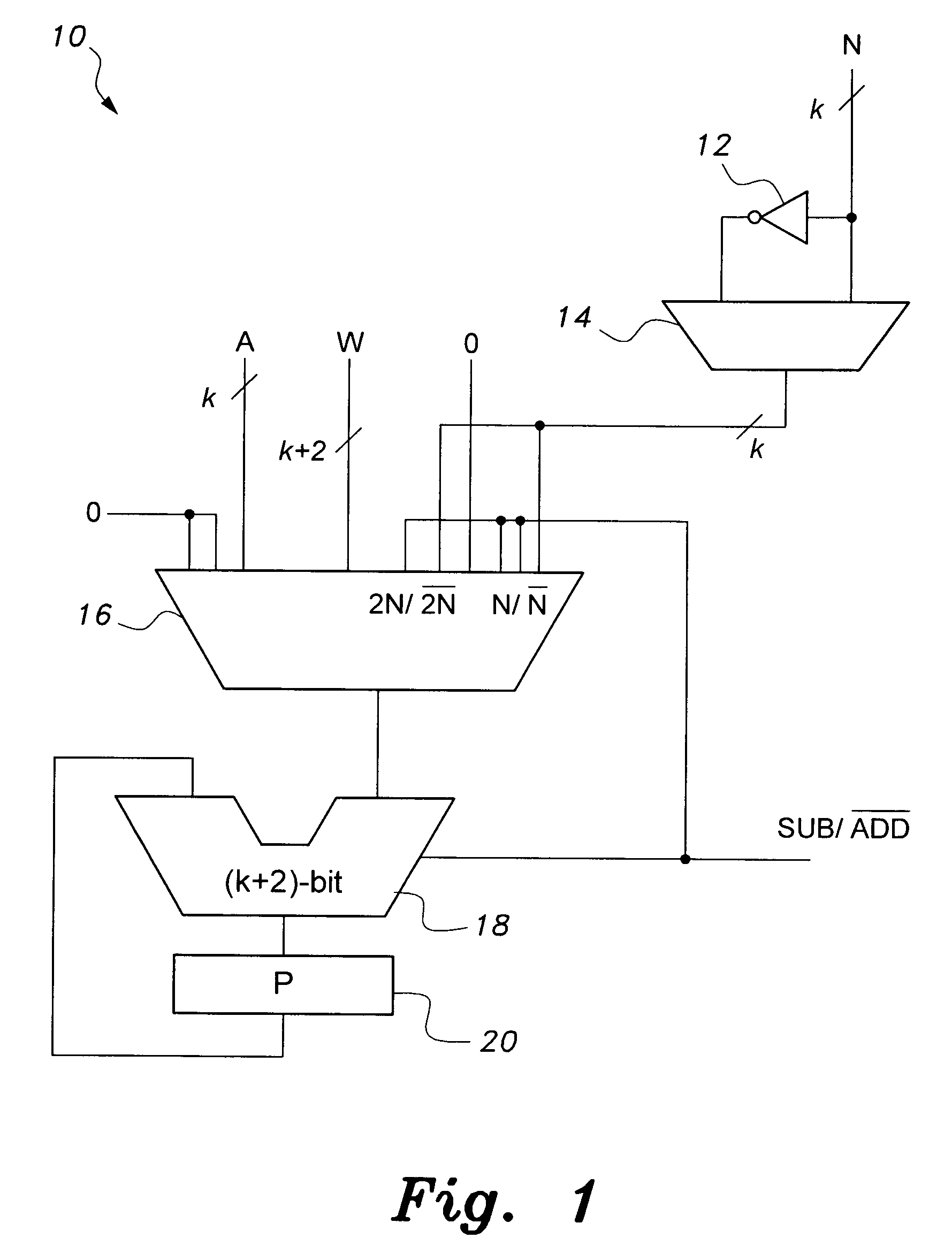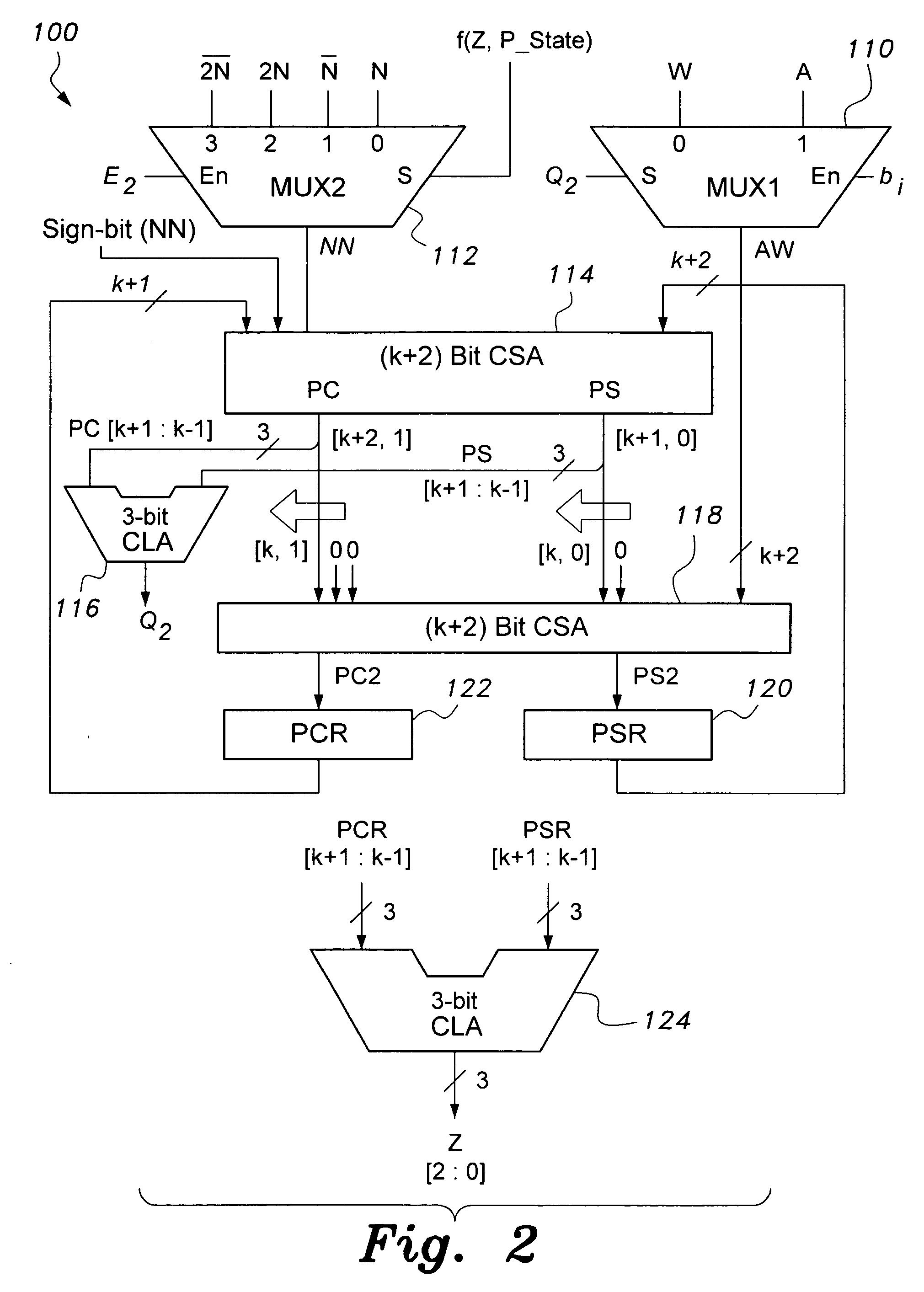Apparatus and method for high-speed modulo multiplication and division
a modulo multiplication and division method technology, applied in the field of high-performance digital arithmetic algorithms and circuits, can solve the problems of increasing the cost of complex mathematical operations, slow, and expensive hardware implementations, and achieving the effect of reducing the magnitude of the running product and speed
- Summary
- Abstract
- Description
- Claims
- Application Information
AI Technical Summary
Benefits of technology
Problems solved by technology
Method used
Image
Examples
Embodiment Construction
[0042]The present invention is directed towards an apparatus and method for high-speed modulo multiplication and division. In its simplest form, the method is directed towards a method for high-speed modulo multiplication. The method includes an algorithm that may be implemented in software, but is preferably implemented in hardware for greater speed. The apparatus includes a circuit configured to carry out the algorithm. The circuit may be incorporated into the architecture of a computer processor, into a security coprocessor integrated on a motherboard with a main microprocessor, into a digital signal processor, into an application specific integrated circuit (ASIC), or other circuitry associated with a computer, electronic calculator, or the like. The method may be modified so that the circuit may include carry propagate adders, or the circuit may include carry save adders. With additional modification, the method can not only perform modulo multiplication, but also simultaneous ...
PUM
 Login to View More
Login to View More Abstract
Description
Claims
Application Information
 Login to View More
Login to View More - R&D
- Intellectual Property
- Life Sciences
- Materials
- Tech Scout
- Unparalleled Data Quality
- Higher Quality Content
- 60% Fewer Hallucinations
Browse by: Latest US Patents, China's latest patents, Technical Efficacy Thesaurus, Application Domain, Technology Topic, Popular Technical Reports.
© 2025 PatSnap. All rights reserved.Legal|Privacy policy|Modern Slavery Act Transparency Statement|Sitemap|About US| Contact US: help@patsnap.com



